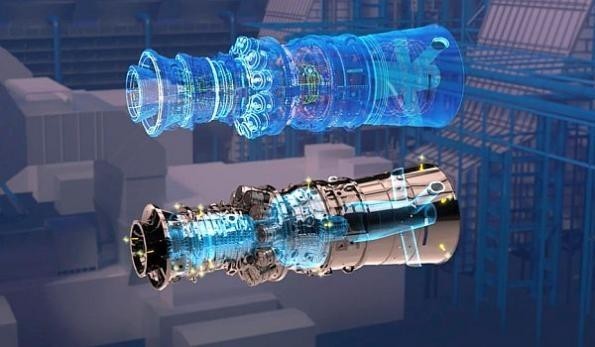Critical Thread Insights – Aerospace and Defense Manufacturing – MBOM, Change Management & Digital Twin
If you’re like most leaders in defense manufacturing, you’re probably looking for ways to accelerate your production timelines while maintaining quality and compliance. The challenges are all too familiar: complex supply chains, evolving regulatory requirements, and a constant demand for customization.
In a recent interview with Rachel Lecron, a seasoned manufacturing engineer and operations leader, we explored how key manufacturing processes—particularly MBOM management, change control, and the use of digital twins—can be leveraged to overcome these challenges. While these practices are often applied in other industries, they hold significant potential for transforming defense manufacturing when adapted correctly.
In this article, I’ll share key takeaways from that conversation and explore how these strategies can help accelerate your manufacturing operations, along with the obstacles you might face and how to overcome them. Let’s dive into the details and see how these approaches can work for you.
Here’s the full interview: https://youtu.be/UCAgQoCebKM
1. MBOM as a Foundation for Efficiency
Rachel highlighted how an accurate, detailed MBOM is essential to optimizing manufacturing processes. In defense, with complex assemblies and stringent regulatory requirements, ensuring that the MBOM is comprehensive and synchronized across systems is even more critical.
The Application
Defense manufacturers often deal with customized components, meaning the MBOM must be both flexible and comprehensive. For instance, imagine an MBOM system that not only tracks the parts used in production but also integrates with design systems (EBOM) and service systems to ensure seamless transitions from concept to execution.
Challenges in Implementation
- Regulatory Compliance: Defense products need to adhere to stringent regulatory standards, meaning every part and process in the MBOM must meet exact specifications. This adds complexity when integrating MBOM with other systems.
- Customization and Variability: Unlike sectors with more standardized production, defense manufacturing often deals with engineer-to-order or configure-to-order environments, meaning the MBOM must constantly adapt to unique product requirements.
Implementation Strategy
Start by implementing a robust PLM system that integrates with your MBOM to ensure traceability across the lifecycle of your products. Ensure that your MBOM includes not only the physical parts but also the associated processes, such as testing and certification steps, required for regulatory compliance.
A key tactic here is automating as much of the integration process as possible, so design changes are reflected in manufacturing without manual intervention.
What do you think? How might implementing a fully integrated MBOM system address challenges with variability in your production?
- Agile Change Management to Handle Constant Revisions
In defense, design changes are not just frequent but sometimes critical to project success, especially with evolving military needs or new technological advancements. Rachel mentioned the importance of a flexible change management system that doesn’t bog down manufacturing with unnecessary bureaucracy.
The Application
In a defense environment, the speed of implementing changes—whether driven by technology, regulation, or design—could make the difference between staying competitive or lagging behind. Implementing an agile change management process that allows defense manufacturers to make real-time updates to production workflows is crucial.
Challenges in Implementation
- Long Approval Cycles: One of the biggest hurdles in defense is the extended approval process required for every design change, as multiple stakeholders—including government regulators—are often involved.
- Complex Supply Chains: Managing change when parts are sourced from various contractors and suppliers adds layers of complexity. Supply chain disruptions can delay production significantly if changes aren’t communicated swiftly.
Implementation Strategy
I’d suggest adopting a phased change management system that mirrors your production cycle. By automating certain approvals for low-risk changes and reserving more in-depth reviews for critical components, you can maintain agility without sacrificing control. Additionally, consider integrating your change management process with your supplier network to ensure everyone is on the same page.
Would automating approvals for non-critical changes speed up your current manufacturing processes?

3. Digital Twins for Process Simulation and Optimization
Rachel’s discussion of digital twins highlighted how valuable they can be for process simulation, especially in the complex environment of defense manufacturing, where precision is key.
The Application
Imagine a digital twin that simulates the entire defense production process—from assembly to final quality checks—allowing you to identify bottlenecks or areas for optimization before they become problems on the shop floor. This can save time and reduce rework, which is especially important when producing critical components.
Challenges in Implementation
- Cost and Complexity: Defense manufacturers often deal with highly specialized, one-off production runs. Building accurate digital twins for these processes can be expensive and technically challenging.
- Data Silos: In many organizations, different teams (design, manufacturing, service) work in silos. To fully leverage digital twins, data must flow seamlessly between these teams, which is often not the case.
Implementation Strategy
Start by creating digital twins for your most critical and repeatable processes, such as assembly of standardized components or subassemblies that are used across multiple projects. Once you’ve proven the ROI, expand your digital twin strategy to more complex, one-off projects. Ensure data flow between your design, manufacturing, and service teams is continuous by using centralized data platforms, so the digital twin remains accurate and up to date.
How do you see digital twins optimizing your operations, especially in highly specialized, low-volume production environments?
By addressing these challenges head-on and implementing integrated, agile systems, I believe defense manufacturers can significantly accelerate their production timelines without sacrificing quality or compliance.






